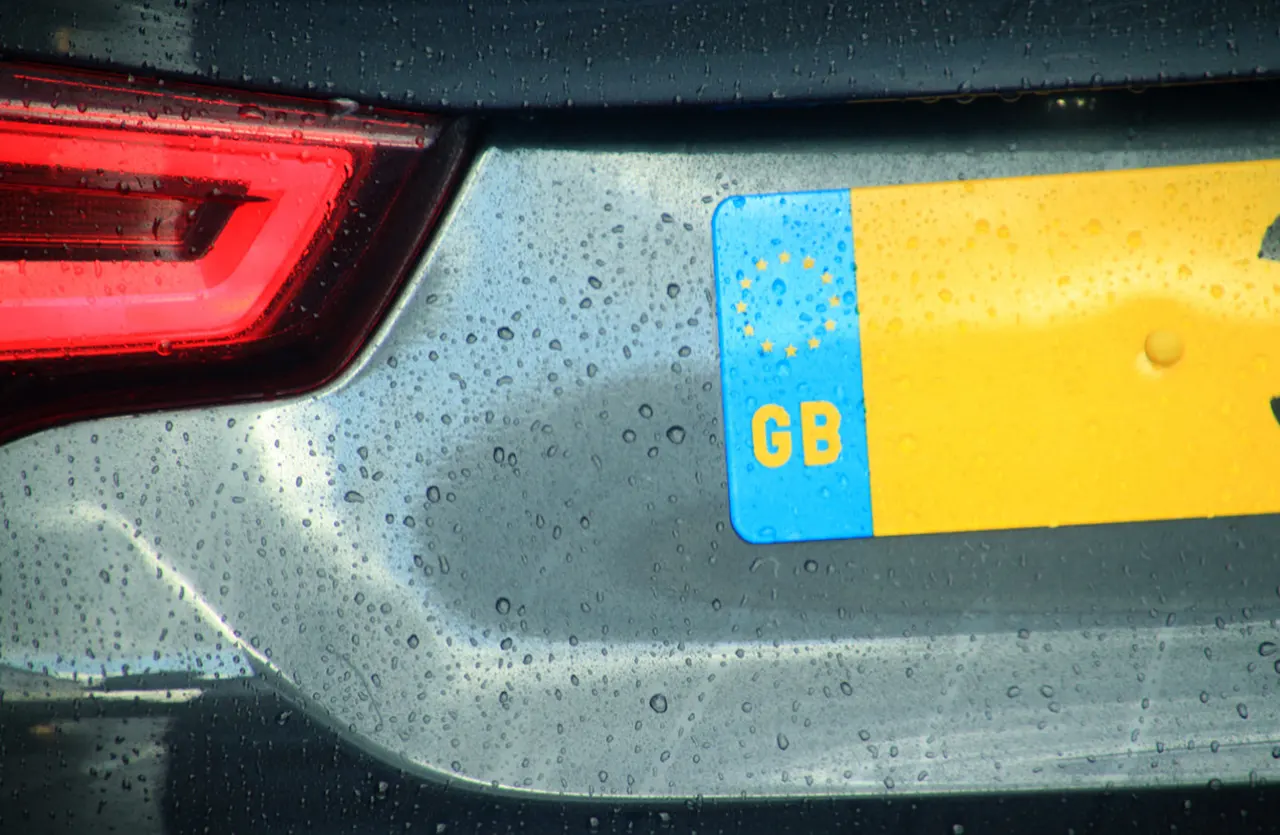
The new British standard was published in 2018, but didn’t become law until September 2021. Recent statutory instruments also change some of the rules. What were these changes, and do they affect your plates?
In September 2021, the current ‘e’ standard became law and must be followed by all registered number plate makers. DVLA introduced the ‘e’ standard with some important changes to how registration plates can look. Namely, the 3 main printed font variations are now illegal. Printed borders are now mentioned in a statutory instrument. Your zero-emission vehicle can display a green flash, and a special mention of “krystal” plates.
Overview – UK Number Plate Rules
In 2018, BSI published the current British standard: BS AU 145e:2018, but it wasn’t until September ’21 that the changes actually became law.
Even though it’s a new standard, there’s hardly any difference between ‘e’ and the previous ‘d’ standard. Moreover, most of the amendments and additions are to make it easier for ANPR systems to read your plates.
There are also some statutory instruments that now make it legal to show a border and a green flash. Printed font variations are now illegal.
Number plate fonts
If you’ve ever purchased replacement number plates, then you’ve probably noticed there’s plenty of options when it comes to font types. We have basic printed plates, as well as the more premium options, such as 4D plates / 3D plates, gel plates, and 4D + gel plates.
Prior to the switch, there were even more font options available. The ‘d’ standard required ‘black’ characters, but it didn’t say you couldn’t use multiple shades of black to create printed effects. This loophole allowed for fonts with highlights, lines, or patterns, such as the carbon fibre font.
By adding an overlay on top of the font with a ‘black’ value of 90% (in CMYK terms), a highlight could turn the font into a 3D looking variation and still comply with regulations.
3D, Hi-line, Carbon fibre
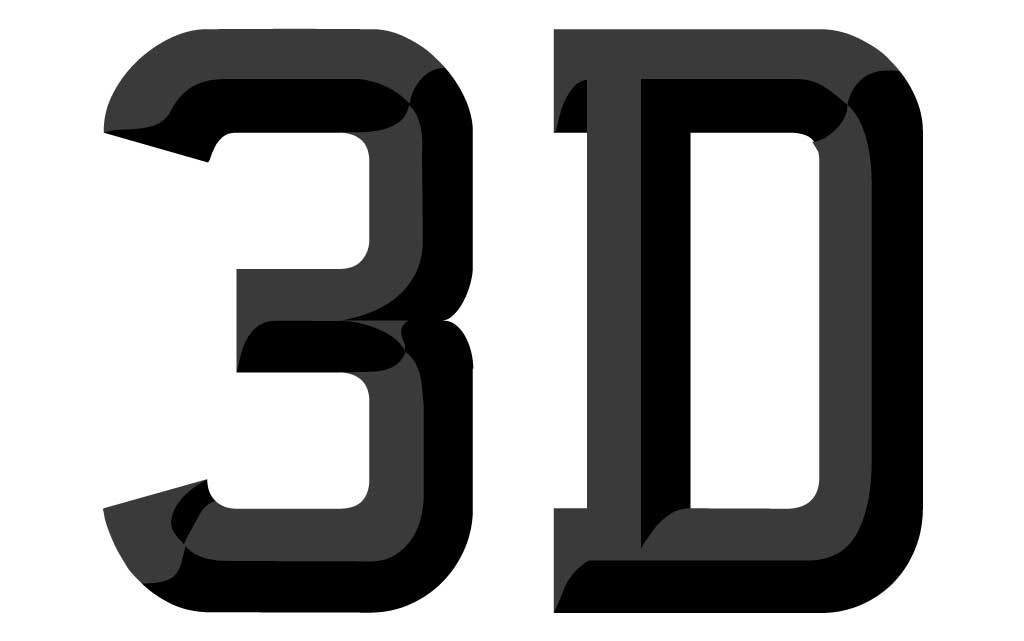
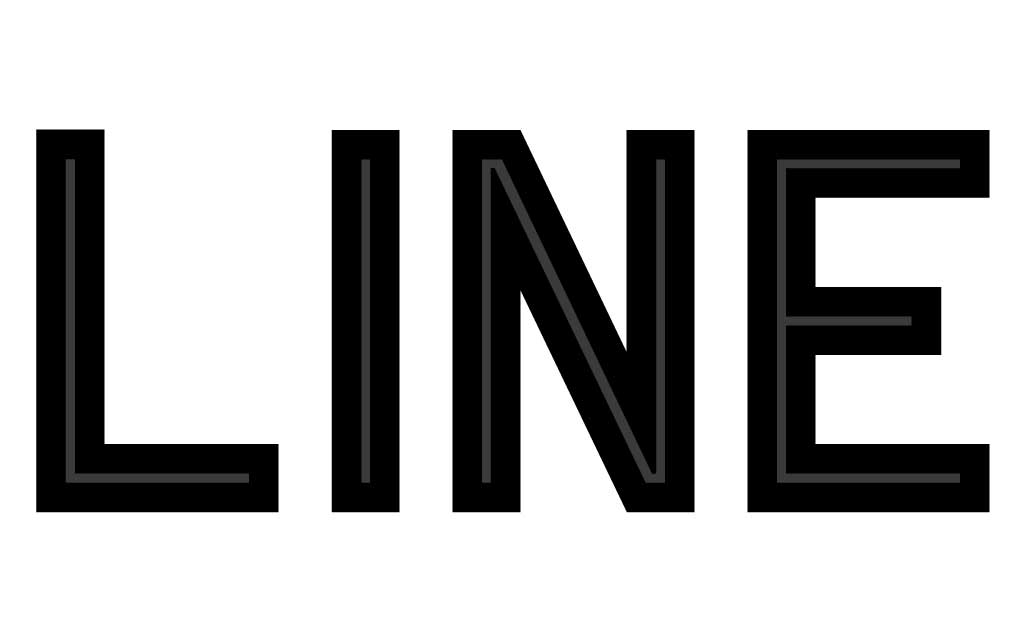
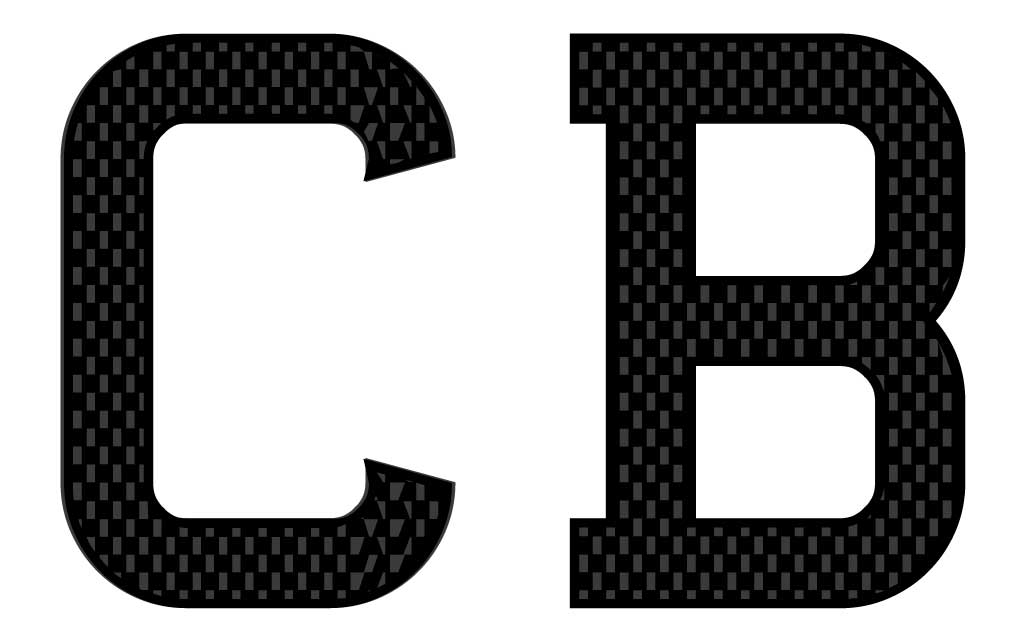
A single line added to the British standard has made these illegal. Section 5 (“Characters”) says “The complete surface of each registration character shall be one shade of black”.
Source: British Standards Institution
Green flash
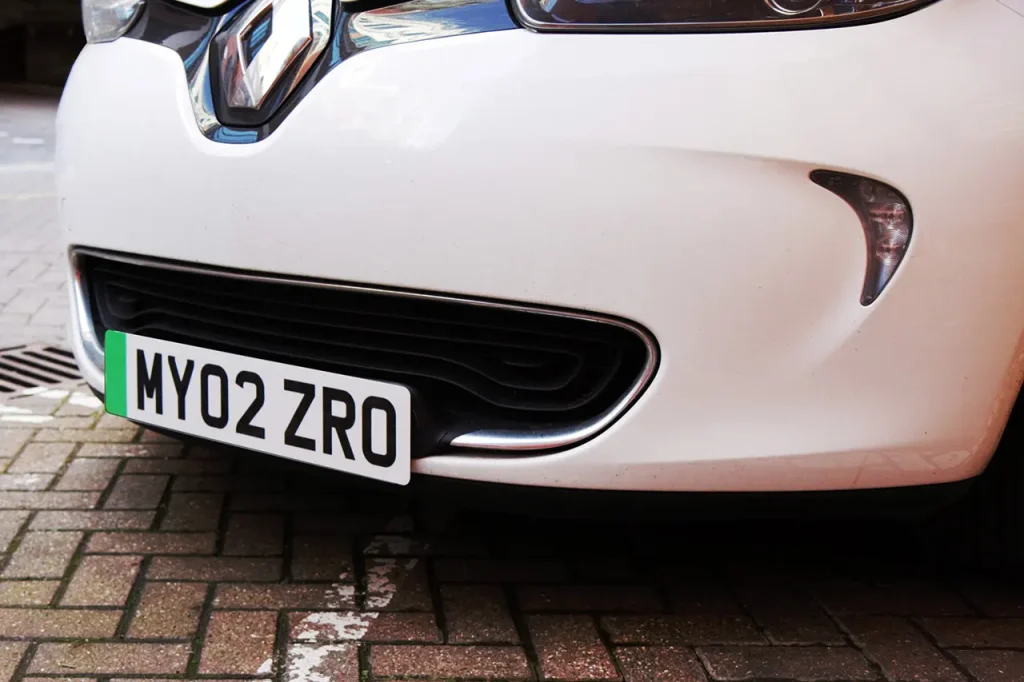
From December 2020, all zero-emission vehicles can display the green flash on their number plates. Some of the more important rules to consider include:
- The green flash should be Pantone 7481c(3), or a very close match
- Should be no less than 40 mm and no greater than 50 mm in width
- Made from retroreflective material for 24-hour viewing
- No other vehicle may display a plate or other device which is green in colour
To be eligible for a green flash, a vehicle must have zero tailpipe emissions. At the time of writing (Feb ’22), battery and hydrogen fuel cell powered vehicles are the only vehicles in this category. Other vehicles, such as hybrids, plug-in hybrids, and vehicles with range extender engines are not eligible.
Displaying a green flash on a vehicle that is not eligible comes with a penalty of £500.
Source: statutory instrument 2020 No. 1276
GB Euro flag
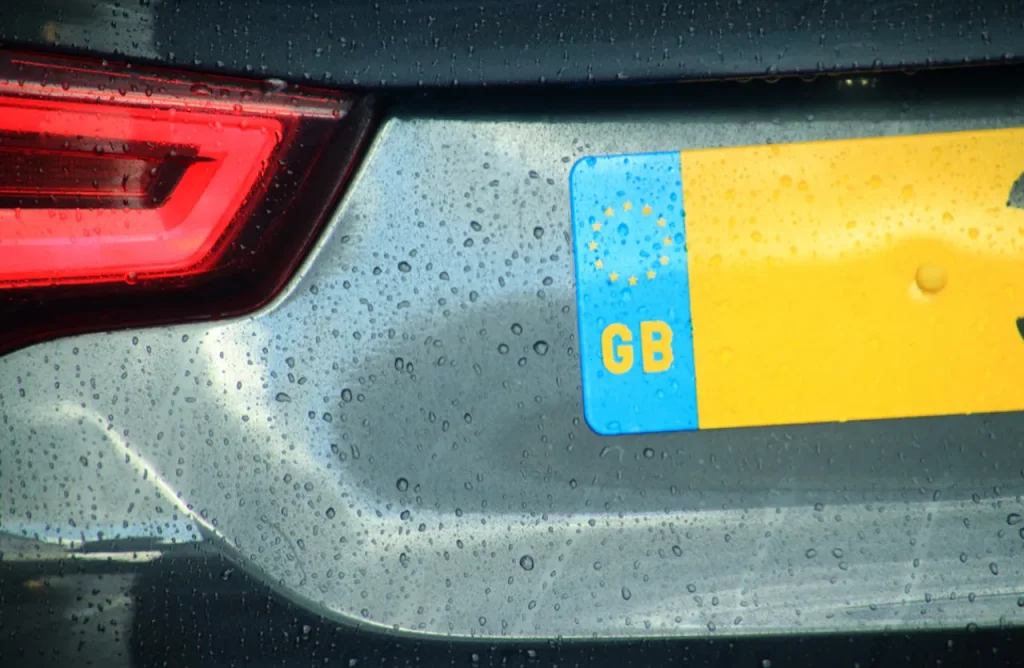
After the UK’s exit from the European Union, the GB Euro flag is now obsolete. Number plate manufacturers may not supply it, and you may not display it on your vehicle. The change came into effect on January 1st, 2021.
Anybody travelling outside of the UK must show a UK sticker on their vehicle, unless their number plates show the UK country identifier and the Union Flag. You cannot use the English, Scottish, or Welsh flags, or the any of their respective country codes. The GB country code is not valid at the time of writing (Feb ’22), even if you have a Union Flag.
Source: Statutory Instrument 2020 No. 1363
Borders
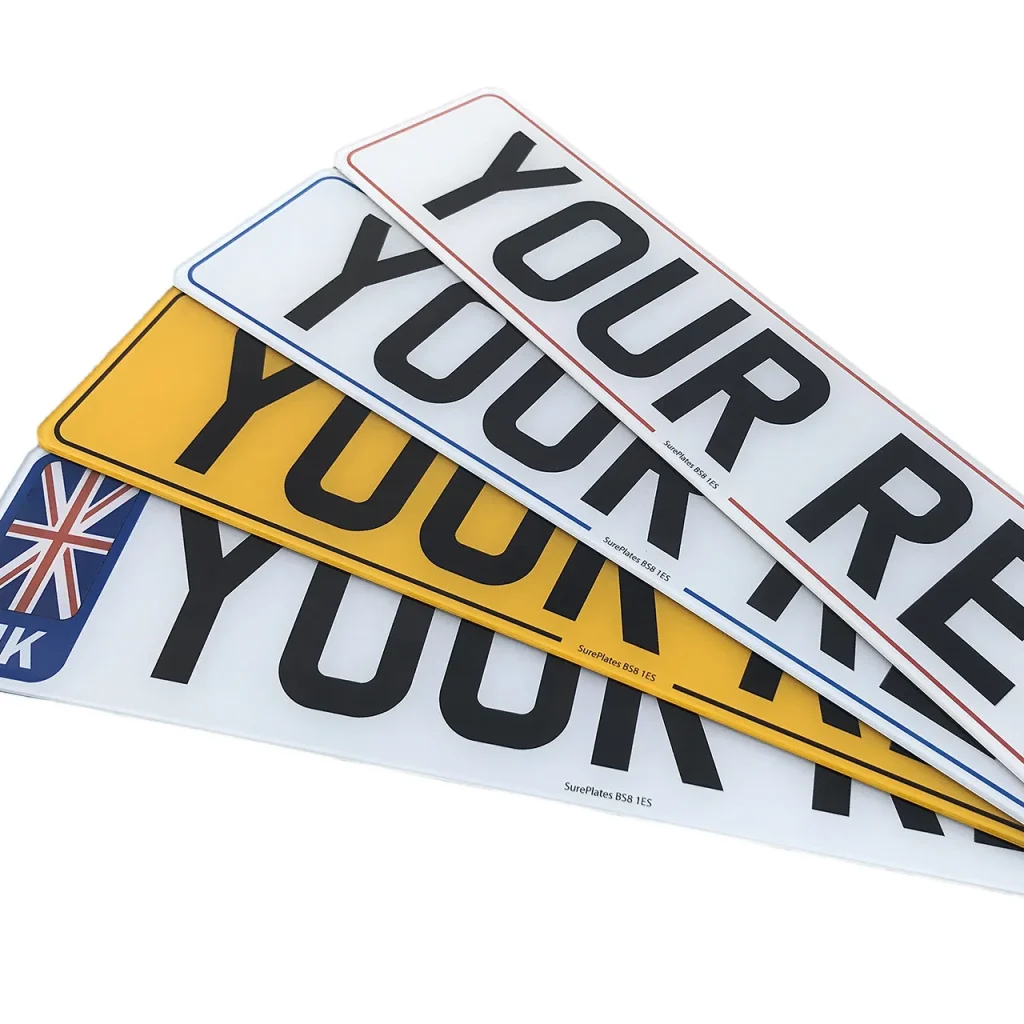
Before 2020, borders were technically illegal and number plates displaying one were in breach of regulations. But provisions in the 2020 No. 1363 Statutory Instrument now make it legal to include a border on your plates.
No mention of borders exists in The Road Vehicles (Display of Registration Marks) Regulations 2001. The British standard allows for an integral raised or depressed border for structural purposes, but doesn’t mention printed borders.
Borders must conform to the following rules:
- Be permanently marked
- Non-retroreflecting
- Of a single shade of non-retroreflecting colour without any design, pattern or texture
- Positioned no closer than 10 millimetres from the edge of any character of the registration mark
- Not positioned above any other markings; and
- No more than 5 millimetres in width
Source: statutory instrument 2020 No. 1363
Special mention: “krystal” number plates
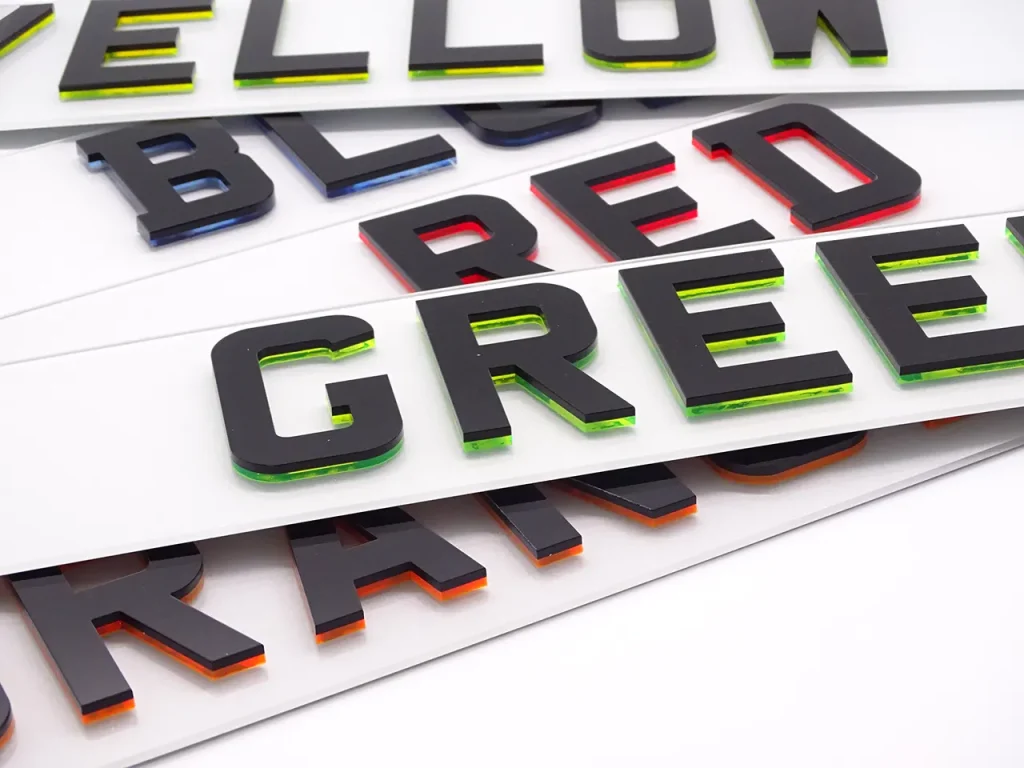
With a quick online search, I was able to find several companies selling “krystal number plates”. Firstly, krystal plates are not number plates, they are signs, and certain disreputable number plate suppliers are using the term “show plates” to get away with selling them. Secondly, the term “show plates” is not a valid defence, and DVLA does not recognise it.
These plates have neon-backed characters made of fluorescent acrylic. Some of them look pretty nice, but none of them are legal.
The new British standard tells us that all characters must be “one shade of black”. But even without the British standard, legislation still requires “black characters”, with no provisions for colour. Krystal plates have never been road legal, even under the previous standards.
Driving with these on your vehicle puts you at risk of being stopped by the police. They can dish out fines of up to £1,000 for number plate offenses, and can remove the plates from your vehicle, forcing you to buy new ones. In rare cases (normally repeat offences), DVLA can even revoke the registration number.
The bottom line: don’t risk it, drive with road legal plates.
Other changes
A few minor additions to the British standard are worth mentioning here. There is now a test for resistance to abrasion and a near infrared test.
Abrasion
Reflective number plates should remain reflective and legible even if they become worn with chips, scratches, and marks from regular driving conditions.
When tested in a laboratory, a test of this regulation requires a machine to abrade a 200 mm area across the surface of the plate. A tool abrading at a rate of 45 strokes per minute for a total of 6,000 strokes should not reduce reflectivity by more than 20%.
Near infrared
The new standard includes a test that requires plates to be legible in the near infrared. Many ANPR systems operate in both visible light and near infrared, and night-time conditions require the use of NIR cameras.
Reading registration marks requires the use of optical character recognition algorithms. There should be contrast between the characters and the reflective background of your plates. Without contrast, OCR algorithms cannot detect your registration marks.
Summary
There are some additions to the British standard and some new statutory instruments. The changes improve the legibility of number plates in all driving conditions.
Printed font variations are no longer legal in accordance with changes to the British standard. A statutory instrument now includes provisions for a green flash. The green flash can be shown on the left-hand side of the plate.
Technically, borders were not legal before a 2020 statutory instrument allowed for them. The border must be no thicker than 5 mm. It should be a single, non-reflective, solid colour. It can be 3D.
Krystal plates are not road legal, and never have been. Don’t use them.
Abrasion and near infrared tests improve the legibility of number plates.